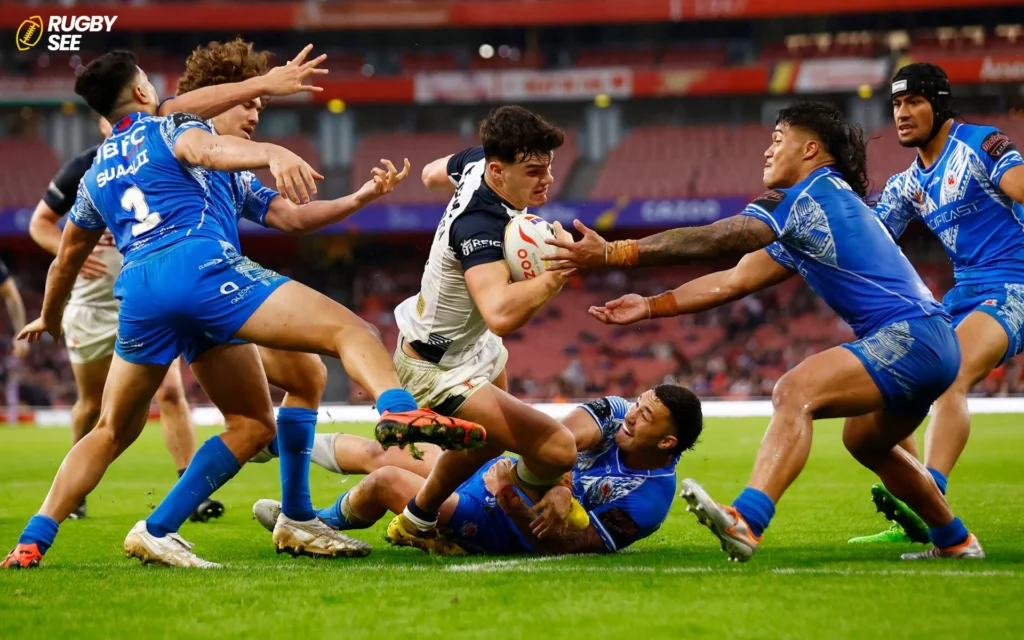In the rugged, physically demanding world of rugby, players adopt various strategies to enhance performance, speed up recovery, and minimize injury risks. Among these practices, one that often catches the eye—and generates curiosity—is the shaving of legs by rugby players. While it might seem counterintuitive in a sport known for its toughness, there are several compelling reasons behind this choice. This article explores the rationale behind rugby players shaving their legs, shedding light on the benefits it offers in terms of performance, medical treatment, and personal preference.
Enhancing Tape Adhesion
One of the primary reasons rugby players shave their legs is to improve the adhesion of sports tape. As discussed in the context of thigh taping, this practice is crucial for injury prevention, support, and recovery. Tape applied to hairy legs can be less effective, not sticking as well or for as long as needed. Shaving the legs ensures that the tape adheres securely, providing optimal support during intense physical activity. Moreover, removing tape from hairy legs can be painful and cause skin irritation; shaving helps to mitigate these issues.
Streamlining Wound Care
Rugby is a contact sport, and cuts, scrapes, and abrasions are common. Shaved legs make it easier to clean wounds and apply dressings, reducing the risk of infection. Hair can trap dirt and bacteria, complicating wound care and potentially delaying healing. Shaved legs allow for more effective cleaning and treatment of injuries, helping players to return to the field faster.
Facilitating Massage and Physiotherapy
Regular massages and physiotherapy sessions are integral to a rugby player’s routine, aiding in recovery and injury prevention. Shaved legs simplify the massage process, allowing therapists to apply oils and lotions more evenly and perform techniques more effectively. This can enhance the therapeutic benefits of massage, including improved circulation, reduced muscle stiffness, and faster recovery times.

Reducing Drag and Enhancing Sensation
While the impact of shaved legs on reducing drag is more commonly associated with swimmers and cyclists, some rugby players believe it offers a slight advantage on the field as well. Shaved legs can also enhance a player’s sensation, allowing them to feel the ball more closely during play. This heightened tactile feedback can improve handling and control, albeit marginally.
Aesthetic and Psychological Factors
The decision to shave legs is not purely functional; aesthetic and psychological factors also play a role. In professional sports, where mental preparation is as crucial as physical readiness, feeling confident and comfortable in one’s skin can make a difference. For some players, shaved legs contribute to a preferred body image and can be part of a personal routine that prepares them mentally for competition and if you want to know about invention of football read When was American football invented.
Addressing Misconceptions
It’s important to address common misconceptions about rugby players shaving their legs. Contrary to some beliefs, it’s not about vanity or an attempt to emulate athletes from other sports. The practice is rooted in practical reasons that directly relate to performance, injury management, and personal comfort.
The Growing Trend in Men’s Grooming
The trend of men shaving their legs, particularly athletes, reflects broader changes in societal attitudes towards male grooming. What was once considered unusual is becoming more accepted and normalized, reflecting a shift towards greater flexibility in how masculinity is expressed and understood.
The Science Behind Recovery and Performance
Digging deeper into the reasons rugby players shave their legs, it’s crucial to understand the science of muscle recovery and performance. Shaved legs can slightly enhance the effectiveness of compression wear, such as tights or socks, which are often worn post-game or during travel. These garments aim to improve blood circulation, reduce muscle fatigue, and accelerate the recovery process. The absence of hair allows for a closer fit, ensuring these garments work more efficiently by applying even pressure on the skin and underlying muscles.

The Role of Tradition and Team Unity
In the realm of team sports, traditions and rituals play a significant role in building team unity and camaraderie. In some rugby teams, shaving legs may start as an initiation ritual for new players but then evolve into a shared practice that fosters a sense of belonging and collective identity. This ritualistic aspect, while varying from team to team, underscores the importance of social bonds and shared experiences in team sports.
Addressing Skin Health
Another aspect of the discussion on rugby players shaving their legs is skin health. Frequent falls, tackles, and contact with the turf can lead to skin abrasions and conditions like turf burn. Shaved legs can simplify the treatment and management of these injuries, preventing hair from complicating the healing process. Additionally, without leg hair, players may find it easier to apply and benefit from skin treatments and sunscreens, especially in outdoor training and matches, further protecting their skin’s health and if you want to know about Using helmets in Rugby read should rugby players wear helmets.
The Psychological Edge
The psychological impact of shaving legs, while subtle, can contribute to a player’s overall preparedness and confidence. In competitive sports, where the margins for success are slim, athletes often look for any advantage that can boost their mental edge. The ritual of shaving, the sensation of cleanliness, and the perceived benefits in terms of performance and recovery can all contribute to a player’s psychological readiness, which is just as crucial as physical preparedness in high-stakes matches.
Changing Attitudes in Sports and Society
The practice of rugby players shaving their legs is emblematic of changing attitudes towards male grooming and masculinity, both within sports and in wider society. What was once perhaps seen as an oddity is now part of a broader acceptance of diverse grooming habits among men. This shift is reflective of a more open and inclusive approach to personal care and body image, breaking down stereotypes and encouraging individuals to make choices that best suit their professional needs and personal preferences.
Educating Upcoming Athletes
As the practice of shaving legs becomes more common in rugby and other sports, there’s a growing need to educate upcoming athletes about the reasons behind it and how to do it safely. Shaving, while seemingly straightforward, carries risks of cuts, ingrown hairs, and skin irritation. Proper technique, the use of appropriate shaving products, and skin care post-shaving are important to minimize these risks. Educating young athletes on these practices helps them make informed decisions about their bodies in the context of their sport.

The sight of rugby players with shaved legs might initially prompt surprise or curiosity, but as we’ve explored, there are several compelling reasons behind this choice. From practical considerations like improving tape adhesion and streamlining wound care to psychological benefits related to confidence and mental preparation, shaving legs is a multifaceted decision that underscores the complexity of modern sports performance.
Rugby, with its rich tradition and evolving practices, continues to offer fascinating insights into how athletes prepare for the demands of the game. Whether it’s through adopting new training techniques, exploring dietary strategies, or yes, even shaving their legs, rugby players are constantly seeking ways to gain an edge on the field, ensuring the sport remains as dynamic and compelling as ever.










